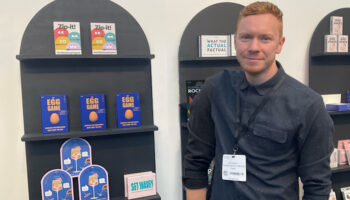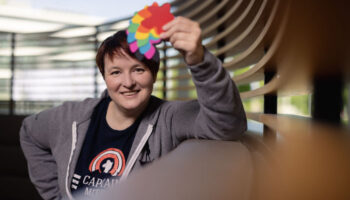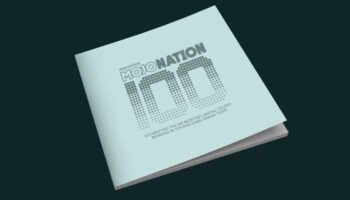Courtisans co-designer Anthony Perone discusses the key to successful design collaborations

Anthony, it’s great to catch up. To kick us off, what set you on the path to game design?
I started playing games in 2017 with Mysterium. During the Christmas holidays, I dreamt on cards overlapping other cards and as I woke up, I started prototyping what I saw in my dream… It became my first published game! Then, it went smoothly… I was able to quit being a teacher, start working in a board game store to broaden my gaming culture and design more and more games.
Amazing! Let’s talk about one of your latest games, the already very popular Courtisans. For anyone new to the game, how would you pitch it?
Easy to play, beautiful to look at, perfect for people who enjoy teasing each other.

Sold! In Coutisans, you receive and play three cards each turn. One is played at the Queen’s table to sway a family’s influence – either positively or negatively. You also play one card in your own domain and one in an opponent’s domain. Whether they’re worth positive or negative points depends on their family’s status at the Queen’s table by the end of the game. It’s a terrific game. Where did the idea for this come from?
Romaric and I spent a few days together, brainstorming game ideas. After a long day, we decided to rest and have a drink. I shared with him a note that probably went like this: ‘There are different play areas in most board games. My own. Yours. A central one. Most of the time we use one more than the others.’ The rest of the conversation gave birth to Courtisans. And the theme was found by the publisher, although early on we already had assassins and spies.
You mentioned this being a design collaboration with Romaric Galonnier. How did the partnership work?
It went very well. We are very good friends. Most of the work was done when we spent those days together. The rest was online calls and playtesting on our own. It happens sometimes… A couple of days or weeks and the game is already solid enough to be shown to publishers.
You’ve done plenty of design collaborations now. What is the key to successful design partnerships?
Your ability to bounce back when it is not working. I met a lot of designers who get attached to one of their games and it gets hard for them to see through it.
What fuels your creativity? What helps you have ideas?
Finding a twist to offer another look at an existing game. Mixing mechanisms is also something I like to do. For example, I played The Op’s Scooby-Doo: a Coded Chronicles game in 2021. I loved it but somehow found it was lacking. Going back and forth to these storylines in the books felt tedious, and I wanted it to be more straightforward and purer. That’s when the idea for Backstories came. Doing it ALL on a simple deck of cards but keeping it possible for different characters to interact with the same environment. This was ground-breaking for me.

Great example. We’ll keep an eye out for Backstories. Now, last question! What’s your most underrated game?
I would say Animeter. I find it very original, super cute and fun to play. There is a tree in the centre of the table and, in front of them, players will play cards to build towers of animals. Players hope, at the end of the round, to collect the apples that are scattered between the bottom and the top of the tree. It challenges your perception of distances. I do believe it deserves better recognition.

Good choice. Anthony, thanks a lot for taking time out to chat. Courtisans is published by Catch Up Games, and the new Backstories series is published by La Boite de Jeu. Both are available via Hachette Boardgames UK.
–
To stay in the loop with the latest news, interviews and features from the world of toy and game design, sign up to our weekly newsletter here




















